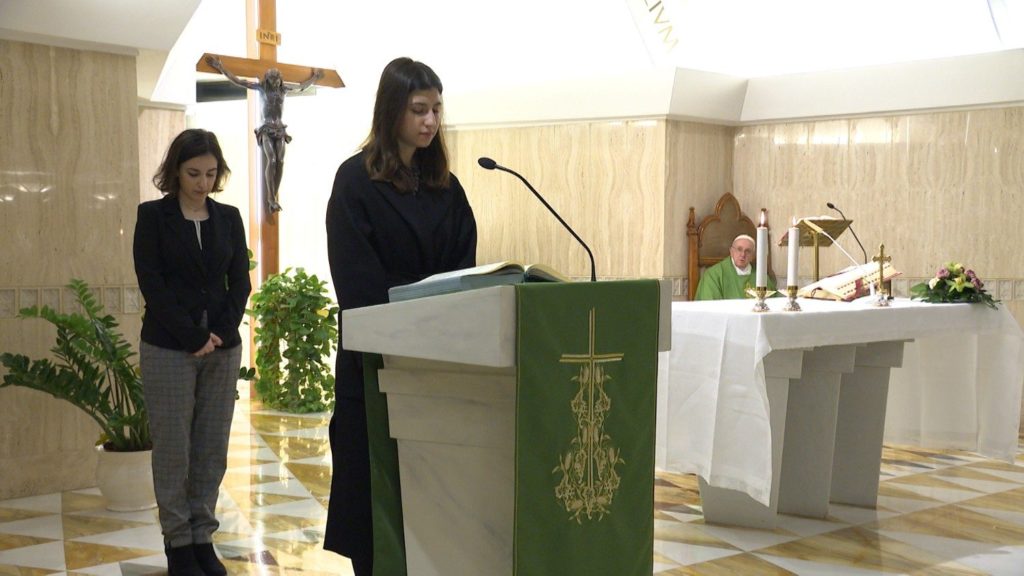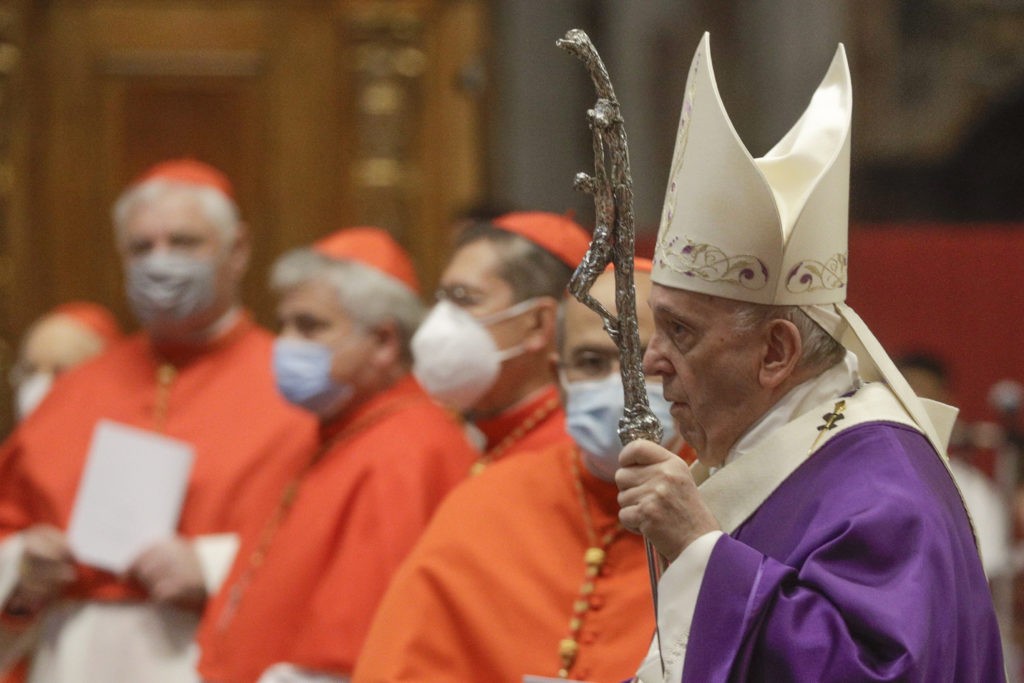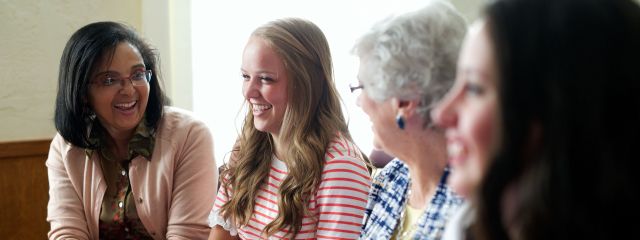
Pope Francis recently announced that women can now read during Mass and instituted the change to recognize the “precious contribution” women bring to the Catholic Church.
The change formally altered canon law to allow an already common practice where women participate as lectors who read at Mass and acolytes who help serve at the altar.
The Jan. 11 announcement reaffirmed women cannot be ordained to the priesthood and sparked further controversy for those who advocate for expanding the diaconate to include women, and for those who oppose.
According to The Associated Press, opponents of the change feel that it will be a “slippery slope toward ordaining women to the priesthood.”
Those who support the change think it will lead to including women in the priesthood, thus giving women greater authority in the church and helping fix priest shortages in several areas, according to The Associated Press.
Women’s roles in a variety of faith traditions have expanded over the last few decades to include higher leadership and greater authority, but some believe there is still progress to be made for women’s role in religions. Here is a brief look at the changing role of women in a few religions.
Catholicism

Pope John Paul II released an apostolic letter in 1994 saying priestly ordination is reserved for men alone. In this letter, he said the presence and roles of women in the church are “absolutely necessary and irreplaceable,” even when not linked to the ministerial priesthood.
Since then, many Catholic women have fought for the ability to receive the priesthood. Most notable is Women’s Ordination Worldwide, an organization dedicated to “working for women’s equality and ordination in the Catholic Church.”
Women’s Ordination Conference Executive Director Kate McElwee said throughout Pope Francis’ papacy, he has encouraged more dialogue on the inclusion of women in the church.
Although encouraging more dialogue doesn’t sound radical, McElwee said it was a “breath of fresh air” to discuss these issues more freely.
As the movement for women’s ordination grew, certain congregations started allowing female priests.
In 2014, the National Catholic Reporter announced a “new day is dawning” as more than 200 women claimed they were official Roman Catholic priests.
Pope Francis released a “letter to young people” in March 2019 where he acknowledged the hardships many female members have faced such as “a fair share of male authoritarianism, domination, various forms of enslavement, abuse and sexist violence.”
“A living church can react by being attentive to the legitimate claims of those women who seek greater justice and equality,” the Pope said. The church “can support the call to respect women’s rights, while not agreeing with everything some feminist groups propose.”
Pope Francis formally altering the law to allow women to be lectors and acolytes “feels like a small thing and inconsequential,” McElwee said, but it is one more thing to “cross off the list” in women gaining full equality in the church.
“There are so many areas for growth,” she said. Keeping women subordinated in the church is “very damaging” for individual women’s faith, and mental and emotional health she said.
For the role of women in all religions, “this conversation is only getting louder,” McElwee said.
A press release from Women’s Ordination Worldwide said the Pope’s “announcement contributes to a slow chipping away at the wall of anti-women exclusion that still lingers and corrupts the official church.”
BYU world religions professor Taunalyn Rutherford said this announcement is more impactful in the global South rather than North America or Europe.
“Any area where within the culture women tend to have more rights, they will already be doing these positions,” Rutherford said. She said this announcement will force the clergy to include women in those areas where the rights and freedoms of women are not as prevalent.
As Catholicism rapidly grows in Latin America, Africa and other areas that have female Catholic majorities, Rutherford said the church needs these female members to help fulfill the lay ministry roles and this announcement allows for that to happen.
Catholic Diocese of Salt Lake City communication director Jean Hill said for Salt Lake, this announcement wasn’t a huge deal. “We have had altar girls and female acolytes for decades now,” she said.
Making the change official, Hill said, will be impactful globally. But for most of the U.S., “It’s nothing new to us.”
The Church of Jesus Christ of Latter-day Saints

The Church of Jesus Christ of Latter-day Saints has long been under scrutiny for not allowing women to be ordained to the priesthood. The Church has always believed women and men are equal in God’s eyes, but their roles are dependent on gender.
Women in the faith are given leadership callings just as men are. They are called as teachers, ministers and leaders and have their own women’s organization. The Relief Society, founded in 1842, is actually the oldest and largest women’s organization in the world and has been a core part of the Church’s structure.
In 1979, President Spencer W. Kimball emphasized the Church’s love and respect for women in a General Conference talk. “Much of the major growth that is coming to the Church in the last days will come because many of the good women of the world will be drawn to the Church,” he said.
In 2012, the Church lowered the age requirement for missionaries allowing women to serve at age 19. Since the change, Church leaders have placed a greater emphasis on the contributions women make even though they are not ordained to the priesthood.
Kate Kelly started the Ordain Women organization in March 2013, calling for equality and ordination for LDS women. According to Holly Welker from Religion Dispatches, the Ordain Women website started with 19 profiles of individuals expressing why they want women to be ordained. Today, there are over 650 profiles of women and men from all around the world sharing their experiences and reasons for wanting to be ordained.
Kelly was excommunicated by the Church in 2014. She continues to speak on gender equality and criticize the Church’s treatment of women.
A letter-writing campaign asking Church leaders to let women pray at General Conference was growing at the same time Ordain Women was founded. Just a month later, history was made when the first woman prayed at the Church’s semi-annual general conference in April 2013.
The number of women speaking in general conference each year continues to grow even though it is still male-dominated. Some people are elated to have more female voices, while others believe more needs to be done about the gender discrepancy.
In 2017, the Church adjusted their General Conference schedule to hold the women’s session annually during conference weekend, instead of the prior tradition of holding the meeting a week before conference.
The general women’s session still endures pushback for “missing” something, according to Exponent II, a webpage created for “sharing Mormon women’s voices.” The dedicated women’s meeting now commonly has greater speaking time for men due to all three First Presidency members speaking compared to previous years where only one spoke.
One of the most recent gender equality changes occurred in 2019 when President Russell M. Nelson announced women, as well as men, are allowed to serve as witnesses for sacred ordinances in the faith’s temples and at baptisms.
Even with the recent changes, some women are reticent to speak publicly about gender roles within the church. The Daily Universe approached several female BYU professors and Church historians for comment but many declined requests for interviews or did not respond.
Jehovah’s Witnesses
“All of Jehovah’s Witnesses are preachers, or ministers — including several million women,” the official Jehovah’s Witnesses’ website says.
The webpage continues to say that women don’t participate in the leadership of the church, but have a “full share” in public ministry and “work hard to be an influence for good.”
Resistance against the status of women has begun to occur in different groups of Jehovah’s Witnesses.
An ex-member of the religion spoke out to Independent in 2018 telling them women in the church are viewed as “a complement for a man.” He also said the church believes women should be submissive to their husbands, letting the husband make all important decisions.
A JW support group created a website in 2019 for youth members to have a place they can turn to. The mission of this group is to help youths “cope until they are able to leave home.”
The articles on this website claim the Jehovah Witnesses’ magazine The Watchtower, is not “truth.” They post articles sharing different member’s experiences in the church to help those wishing to learn more about the religion and to discuss the issues people are facing.
JW support said the Jehovah Witnesses are a patriarchal society where women cannot hold positions of authority and are to view men as their head. It also says that Witness women cannot teach unless no men are available, and when they do they must wear head coverings to show “submission to the headship arrangement.”
Evangelicals
The Southern Baptist Convention believes women are complementary to men and cannot hold any authority over men.
Similar to The Church of Jesus Christ of Latter-day Saints, Southern Baptists have women’s organizations and female missionaries. The Utah-Idaho Southern Baptists Convention provides monthly women conferences to help women “thrive” in their relationship with God.
In a resolution published in 1980, the Southern Baptists reaffirmed “the biblical role which stresses the equal worth but not always the sameness of function of women.”
Since then, various groups have sought higher leadership or ordination for women in this denomination, but not much change has occurred.
A major scandal arose in 2019 when hundreds of sexual abuse victims spoke out against church leaders. Many within the faith were vocal about the scandal, with some people claiming the sexist culture of the church was to blame. Others took the media chaos and used it to bring “new life” to the female ordination controversy.
During this call for gender equality, prominent Southern Baptist women spoke out about the expanding role of women.
Peggy Haymes wrote an opinion article detailing her struggle to become an associate minister and the progress that has been made. “As women, we’re still not at a place of full freedom to follow our calling, but it’s a different world than when I graduated from seminary,” she said.
Popular Bible teacher Beth Moore has gained praise and criticism as she grows in influence. She never claims to try to change Baptist beliefs, but the power she has in the Church is seen as a threat to those with authority. Evangelical women follow her lead as the number of female influencers in the church grows.
Other Protestants
Protestant religions generally have a “priesthood of all believers,” according to Rutherford.
In some of these religions, leadership and pastor roles are not ordained to an official priesthood because for them, every baptized Christian is considered a priest already. This means many of these religions have led the way with including women in pastor and leadership roles.
Females can be Lutheran bishops, Methodist elders, Baptist pastors, Presbyterian deacons and more. Rutherford said the prevalence of women in leadership roles depends greatly on the culture of that area.
“If the culture reflects a lower position of women, then the religion most likely will as well. They tend to work in harmony,” she said.
Rutherford said all religions differ greatly in their traditions and practices with regards to women and are so diverse that it’s hard to know what each church will do. While some Lutheran or Methodist denominations ordain women, others don’t.
Despite the fact that progress for women’s status in religions can be “very slow-moving,” especially in conservative traditions, “I think you would have to say in all religions there is a movement forward,” Rutherford said.




